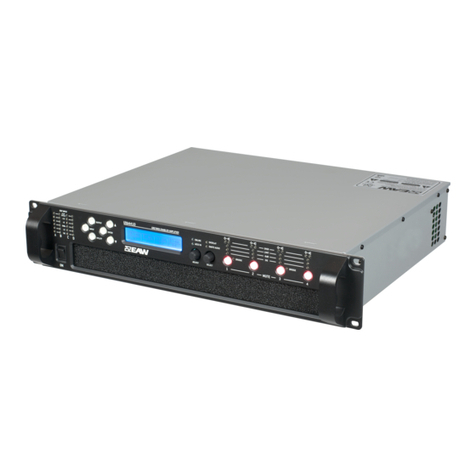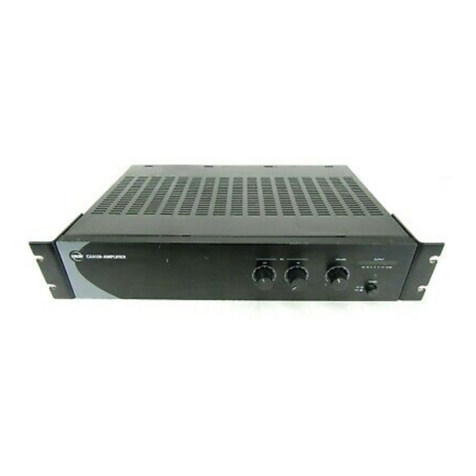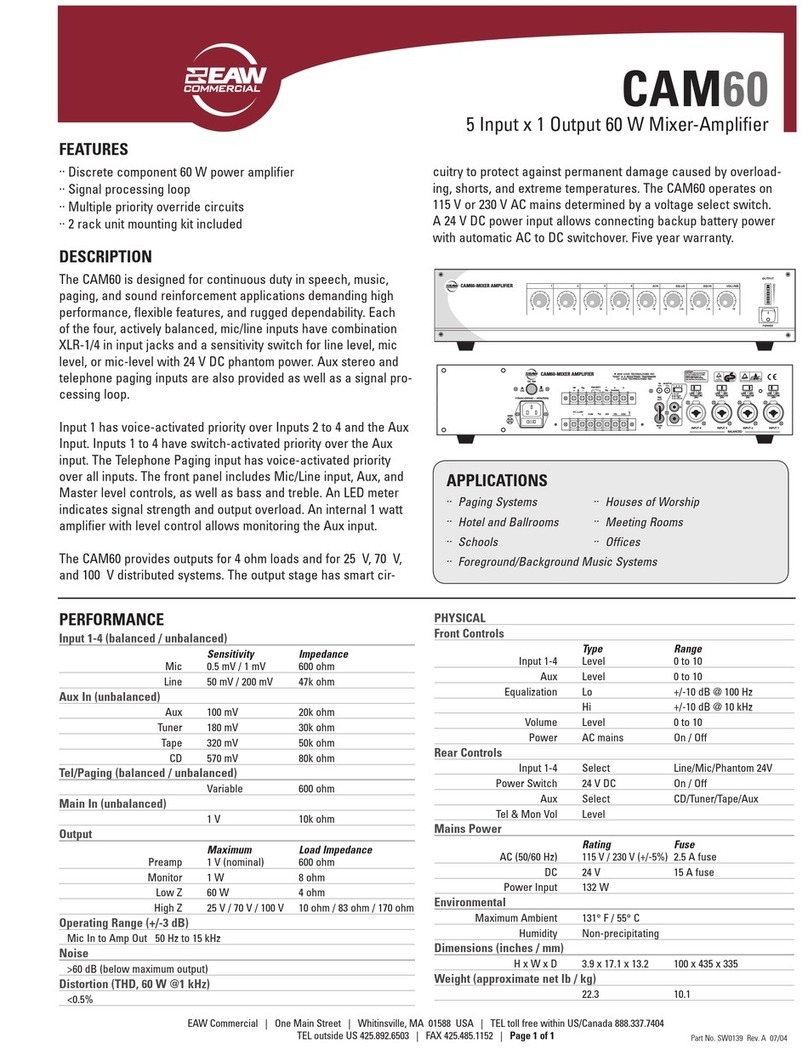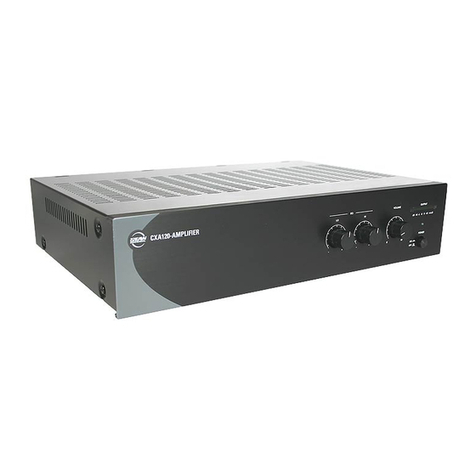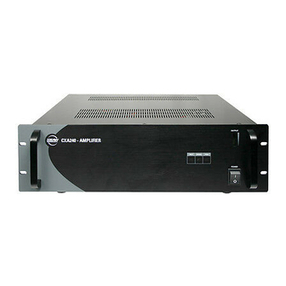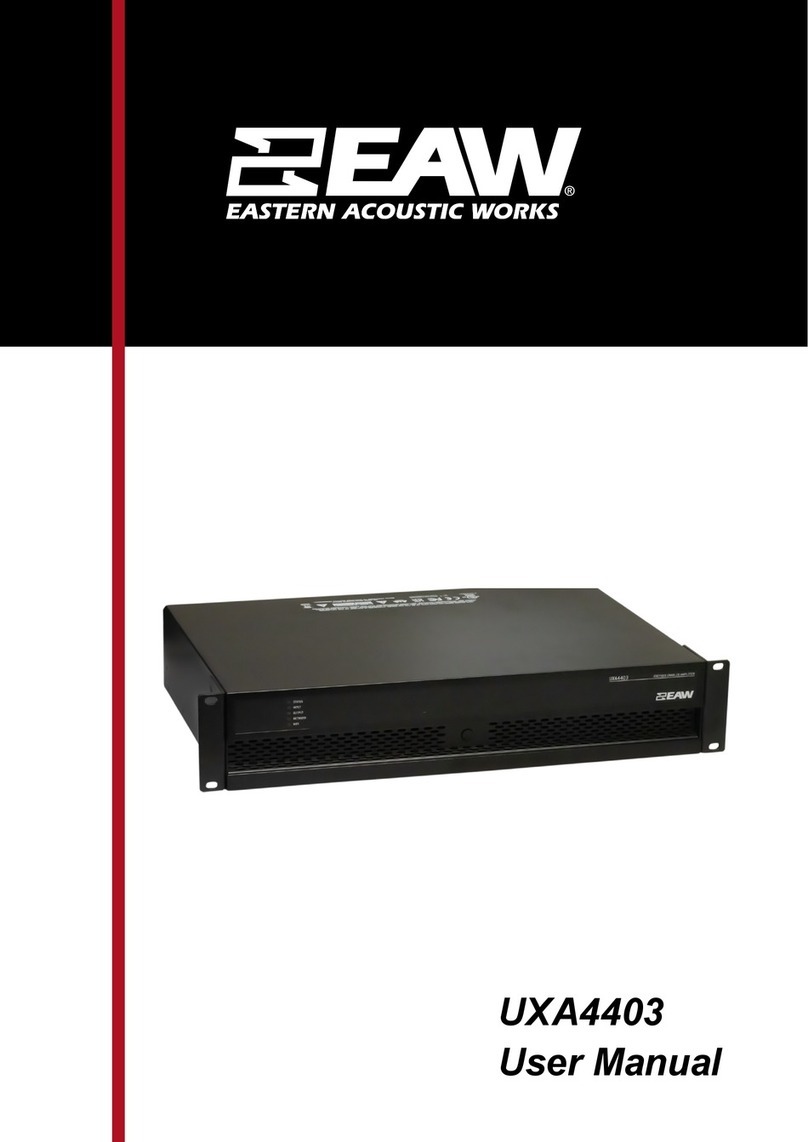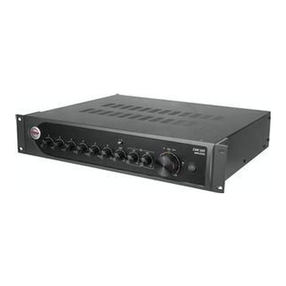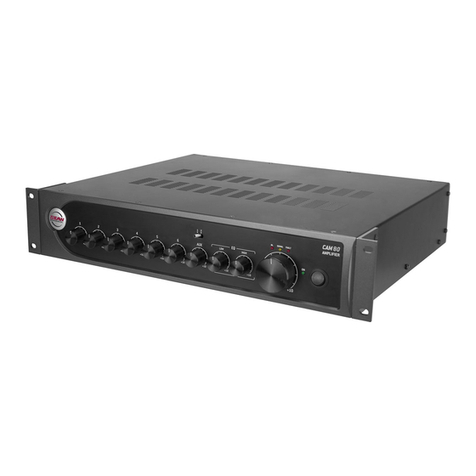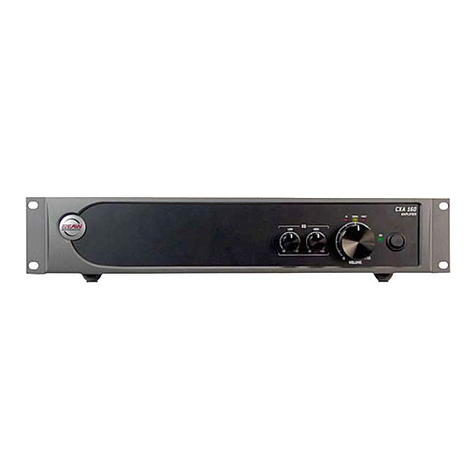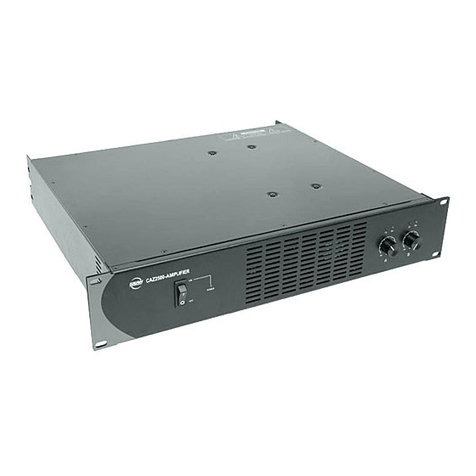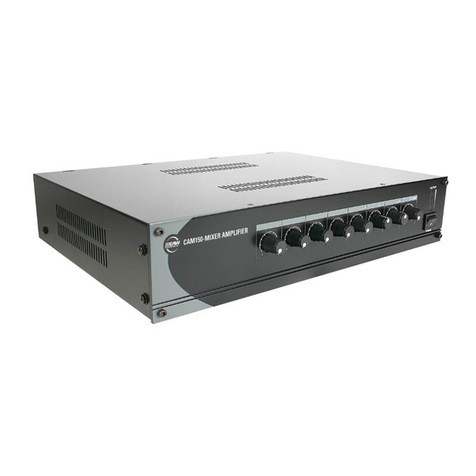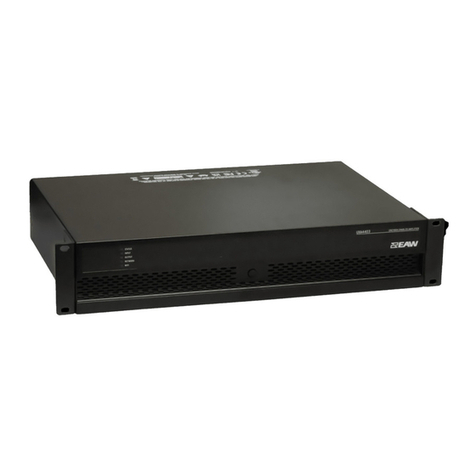
Tel 800 992 5013 / +1 508 234 6158
|
www.eaw.com 2
Line Array Application Guide
Using the Loudspeaker
Users will need to perform the following
general tasks to properly put an EAW line
source product into use. This manual includes
details for each task.
1. Design the system using the Resolution™ 2
Design & Control Software (see the program
Help File for further information about using
Resolution).
2. Design and install suspension points to
support the array(s)/rigging in intended
locations and aimed in the desired directions.
If ground-stacked, provide a level surface
capable of supporting the total weight of the
array(s).
3. Connect the loudspeakers to a supported
EAW Processor and/or power amp.
4. Set-up and adjust overall system gain and
signal processing, as needed to maximize the
array's performance for the application.
5. Provide training to operate the
loudspeakers within their limits.
6. Provide regular inspection and
maintenance to maintain the integrity of
the installation and the performance of the
loudspeakers.
Array Design
See Resolution Help File for assistance in
properly designing line array systems.
Software
EAW Resolution 2 software is designed to
assist in SPL predictions, determine splay
angles, and calculate rigging limits for all line
array items.
Always ensure that your EAW Resolution
software is up-to-date.
For a complete list of recommended system
requirements, please refer to the Resolution
2 help le.
Using EAW Resolution™
EAW Resolution is the key to determining
the optimal array conguration for any
application. Rooted in EAW’s proprietary
FChart modeling and calculation engine,
Resolution allows users to easily model any
venue and visualize a wide variety of array
designs to determine what particular array
conguration is best suited to the venue.
Users simply need to dene the array position,
allowable trim, minimum clearance, and
quantity of modules available and use the
Array Assistant to determine the optimal
array conguration for a given venue. In
many situations no further prediction work
will be necessary for optimal results. Users
can also adjust the results after running the
Array Assistant by manually adding/removing
modules or adjusting coverage and observing
changes in predicted results. In this way
Adaptive arrays can be optimized for any
application.
Additionally, Resolution interfaces directly
with Adaptive Systems via the Dante
protocol, allowing users to easily upload
the processing parameters for their system
directly from their model to the physical
array, adjust equalization and coverage, and
monitor all Adaptive components in real time.
No additional software is necessary to use
Adaptive systems.
No additional software is necessary to use
Adaptive systems.
Please visit www.eaw.com to download the
latest version of Resolution. Instructional
videos can be viewed on education.eaw.com.

